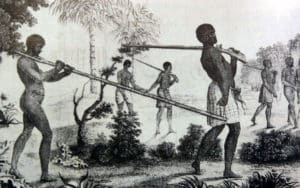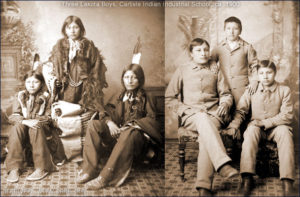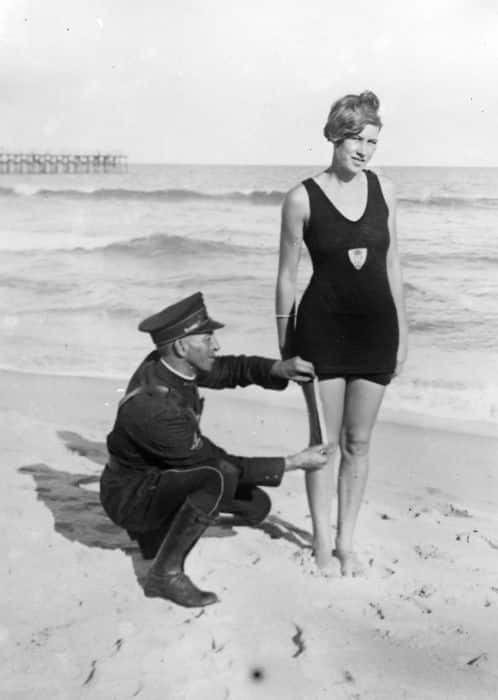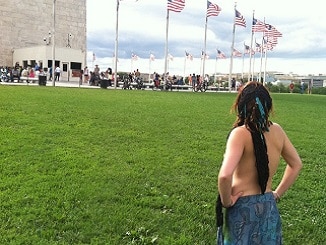How the Textile Industry Demonized Nudity and Flourished in Times of Colonization
Guest Blog by: African American Naturist
While most people don’t think about the historical political impact of the clothes they wear, textiles and the textile industry has in fact had a tremendous impact on societies around the globe, and still do today. It must be remembered that prior to the European Renaissance and Industrial Revolution, the majority of Earth’s human population was (and still is) centered about the equator in tropical and semi-tropical regions.
European and other temperate zone, sub-arctic, and arctic populations traditionally required hand-made clothing (typically of animal skins and furs, wool, insect by-products such as silk, hand processed leaves and tree barks, and hand/loom woven plant fibers such as linen, hemp, and cotton) for protection from the elements.
Desert dwelling peoples also traditionally required clothing for protection from overexposure to the harmful ultraviolet rays of the sun. In some of these societies handcraft textiles and loom woven fabrics became a valued art, benefiting prosperous weavers and merchant classes. People also wore clothes to indicate their socio-economic status, and religious offices.
However, for most people around the world, outside of small elite aristocracies, wealthy merchant classes, the religious establishment, and societies heavily influenced by handcraft textile and merchant guilds, clothing was primarily worn for practical functional purposes, and not required when impractical, such as for swimming, or for working in hot humid conditions.
Fabric body concealment was not ascribed any moral dimension as symbolic of modesty or purity. The naked human body was associated with poverty at worst, honesty and purity at best, and was, at the time, not directly associated with human sexuality by the majority of Earth’s peoples.

Then, in 1750 the textile mill was invented in England. This created tremendous wealth for the owners of textile mills, and agricultural land barons that supplied cotton, wool, and other raw materials to be woven into textile fabrics for clothing (as well as for rope, ship sails, construction materials and other uses).
As clothing was the major profit generating end use of the textile mill owners products, it became imperative for their local populations to be indoctrinated with the “need” for fabric body concealment at all times to maintain continual profits.
This indoctrination also solidified the positions of the aristocracy by direct transfer of wealth from the masses via textile clothing purchases, by designating certain clothing styles as highly expensive and only to be worn by aristocrats, and by designating many different clothing styles for each gender, age, class, and trade, region, activity, and sect, thus reinforcing divisions within the general population, making them more easily subdivided and controlled.

Once the masses accepted the practice of continuous fabric body concealment (often indoctrinated though the church, the most effective proponent of new ideas available to the aristocracy at that time) the wealth of the textile manufacturers was assured for generations.
Textile manufacturers and religious organizations in Asia had long followed a similar path to continuous profits and authoritarian hierarchical control within their own regions and religions as well.
As the technology of the industrial revolution progressed it became possible for the textile manufacturers to supply more clothes than was demanded by local populations, and the manufacturers were thus compelled to seek elsewhere to market their products.
Thus colonial expansion was greatly accelerated. The European aristocracy sought new markets for its products (primarily textiles, in addition to alcoholic beverages, and weapons), cheap labor, and new environmental resource lands to produce its required raw materials (primarily cotton and wool). The church sought new converts to its authoritarian belief systems, including of course fabric body concealment at all times as a matter of piety, morality, decency, and civilization.
Governments sought expansion of their global influence, tax base, and increase of their national wealth. Governments also sought to enforce fabric body concealment as a matter of “law” and social “order” as the practice became standard within their own populations and profitable elsewhere within their colonies. Sufficiently indoctrinated populations themselves assumed the belief that they were made more pious, moral, modest, decent, and pure through the practice of fabric body concealment.
However, the many cruel atrocities performed by the European church during the middle ages (mostly rooting out indigenous traditional holistic counselors, scientific knowledge bearers, and healing practitioners, many of which were women), the witch trials of Salem Massachusetts, the international slave trade, two world wars, hundreds of large and small scale military conflicts, and millions of more recent violent criminal psychopathic acts tells quite a different history.

Today there are other means than authoritarian hierarchical institutions for textile manufacturers to indoctrinate their pervasive false message of the necessity of fabric body concealment at all times.
Television induces highly suggestible trance states allowing programming to access the subconscious as well as the conscious mind through projection of visual images and auditory signals.
Magazines captivate minds with glossy vibrant colorful images and engaging narratives. Newspapers expound the stories mass media consensus determines to be most profitable. The internet engages and interacts with the minds of its users. Advertising more and more invades every aspect of our daily life.
Meanwhile women are attacked by various forms of violence, children are harassed to the point of suicide, people starve themselves to death out of hatred for and dissatisfaction with their bodies, and people are routinely ostracized, bullied, attacked, raped, and murdered for what they choose to wear.
Actually, clothes freedom (the ability of any person to wear or not wear whatever they want without negative repercussions or consequences) can be a fair indicator of freedom in general within a given society.
From what I have seen in my travels abroad, liberty and self-determination tend to abound in the societies where clothes freedom exists. In the societies where clothes freedom is denied, authoritarian hierarchy prevails and other personal freedoms are also at risk.



